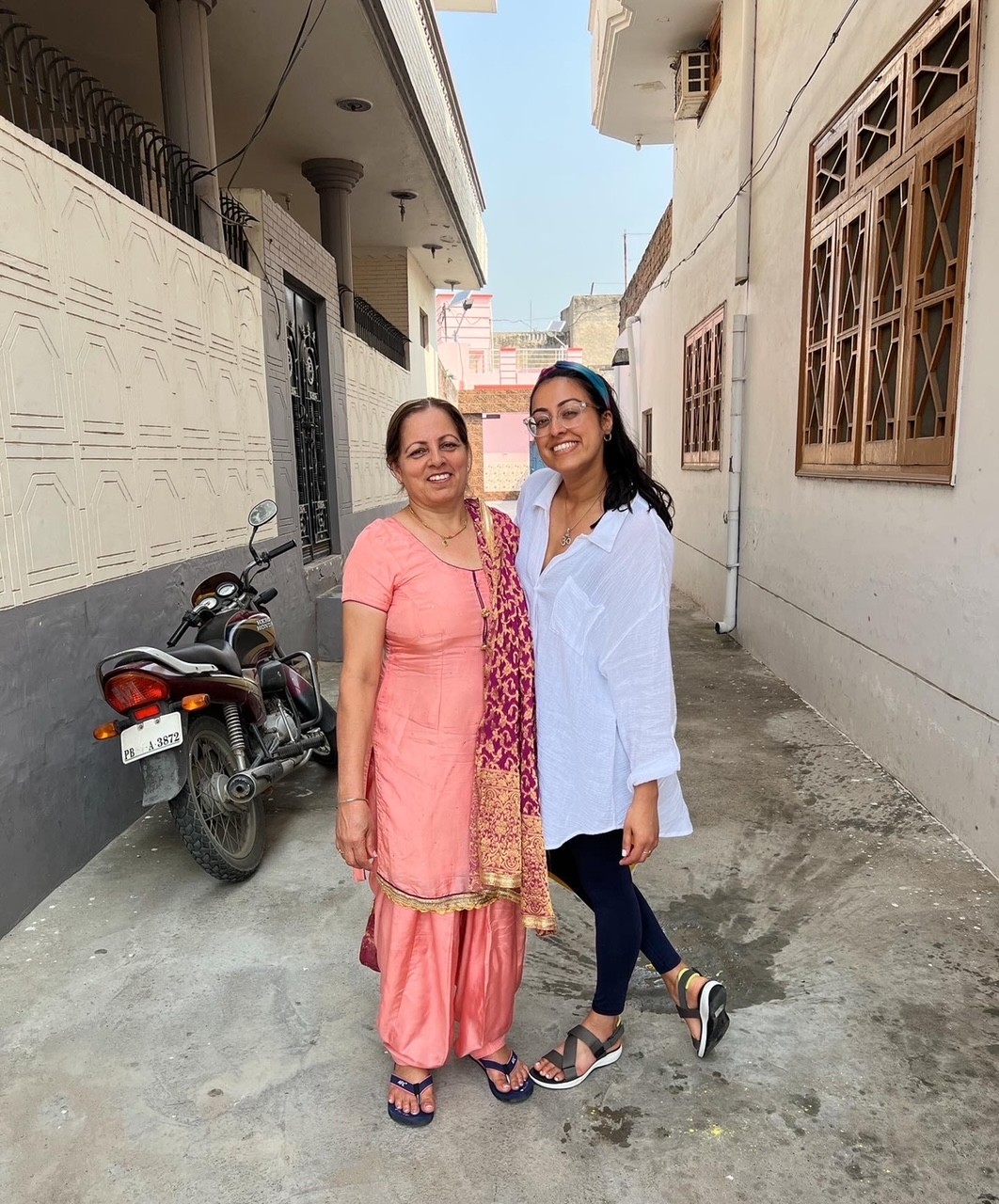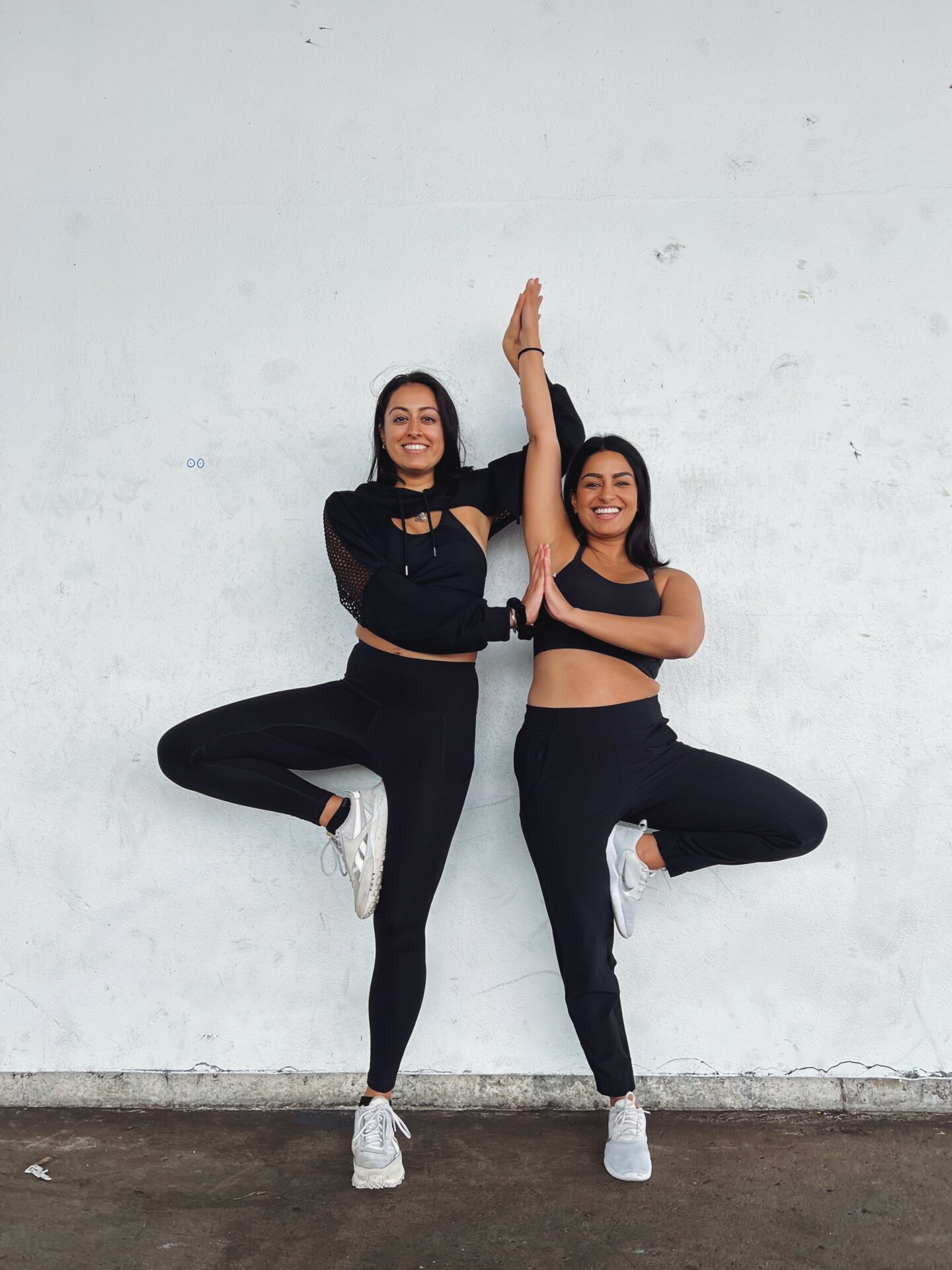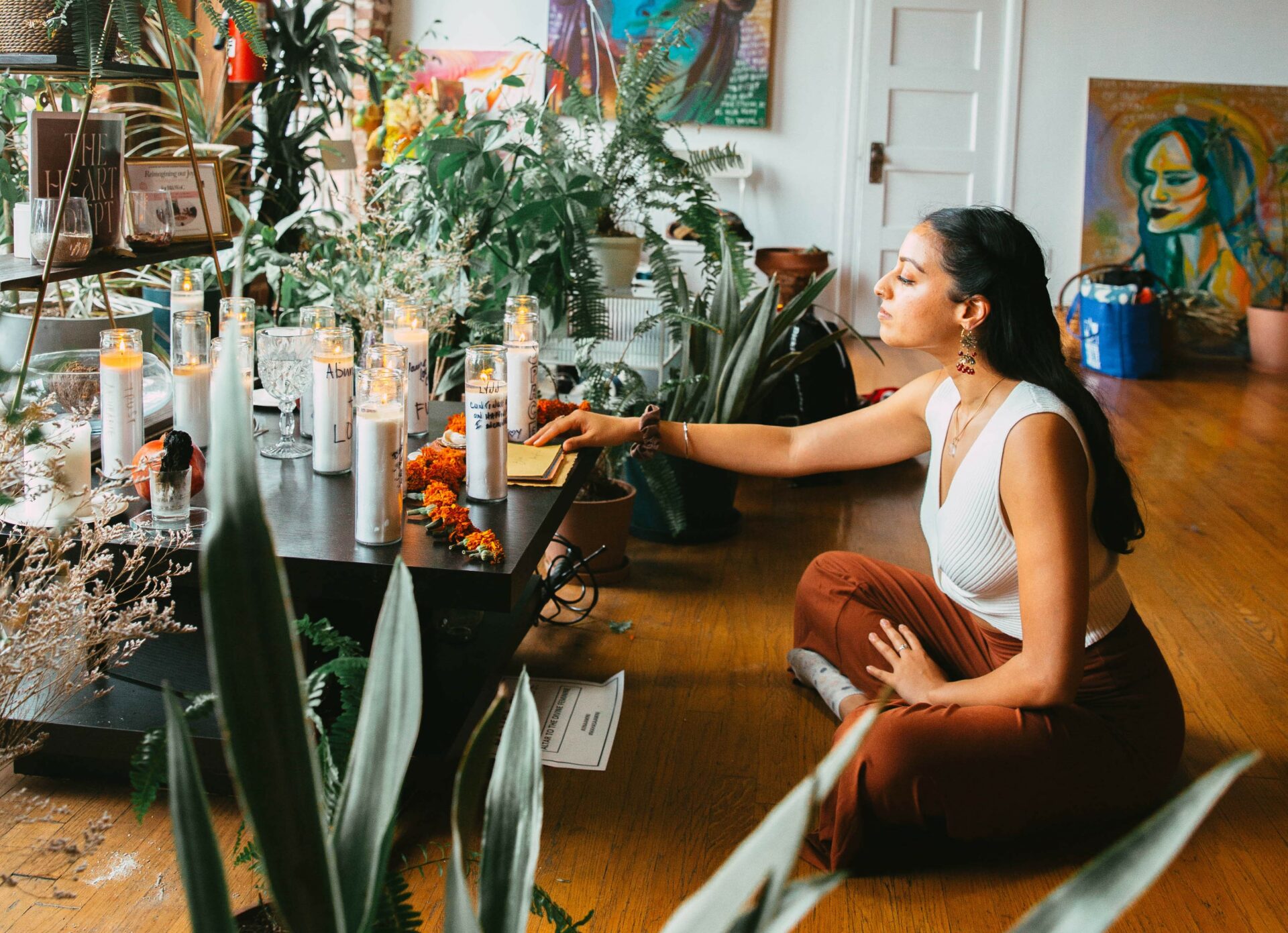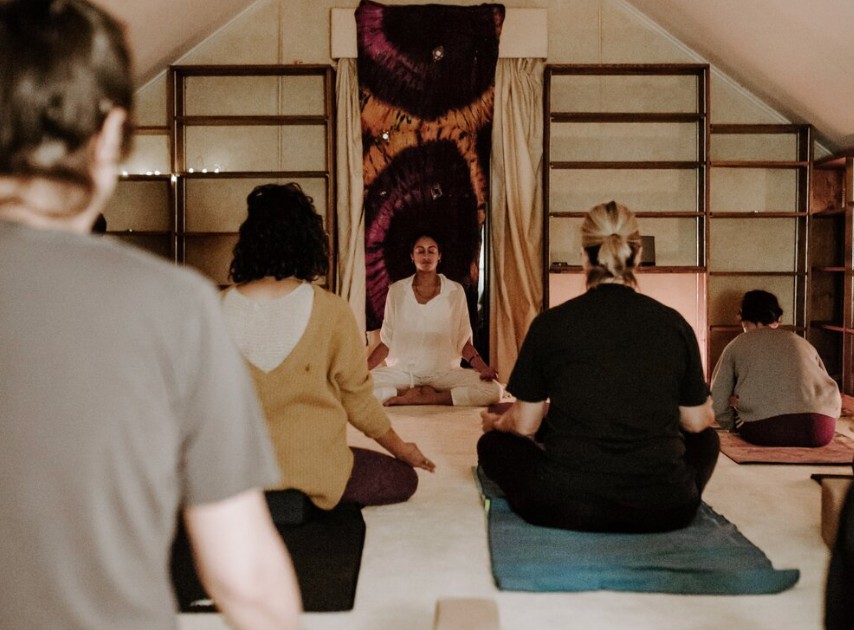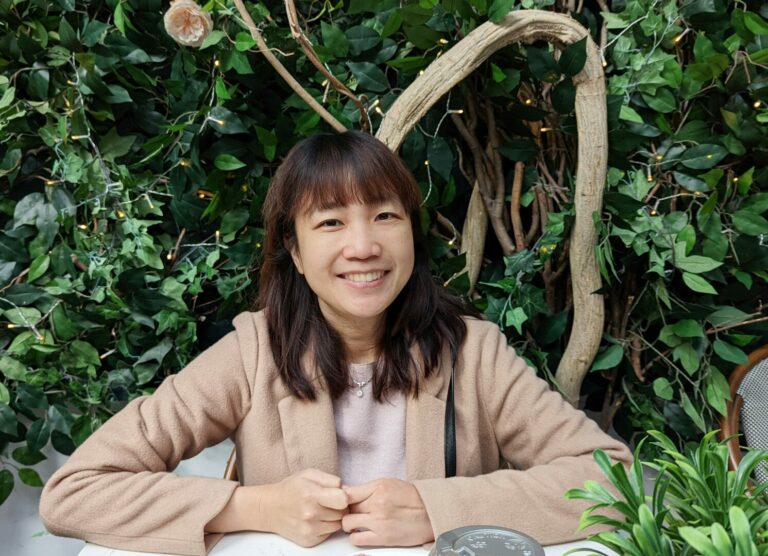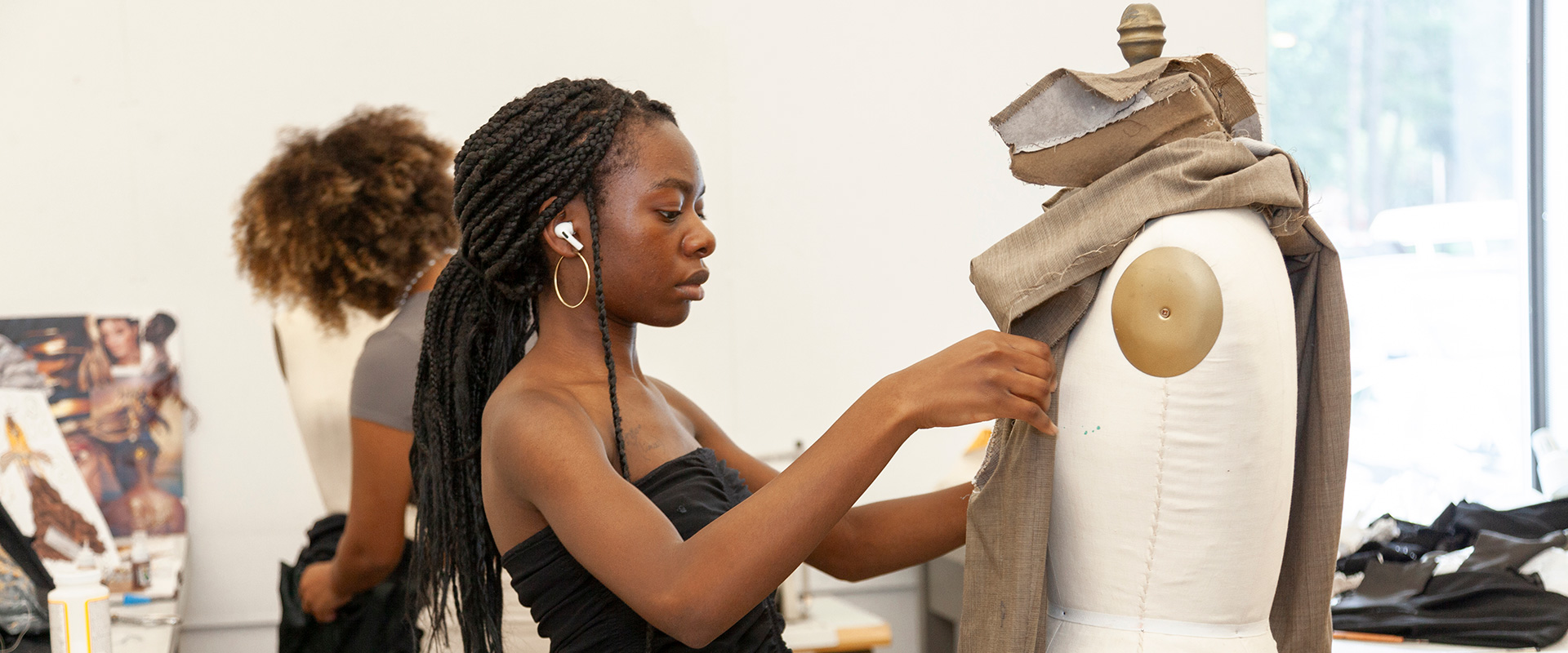We caught up with the brilliant and insightful Harpinder Mann a few weeks ago and have shared our conversation below.
Hi Harpinder, appreciate you sitting with us today. Maybe we can start with a topic that we care deeply about because it’s something we’ve found really sets folks apart and can make all the difference in whether someone reaches their goals. Self discipline seems to have an outsized impact on how someone’s life plays out and so we’d love to hear about how you developed yours?
Being raised in a Panjabi-Sikhi family, as the eldest daughter of immigrants, tremendously shaped me and my sense of self-discipline. In Sikhism, there is a core belief in the oneness of all beings and the equality of everyone. There are also three core pillars shaped by Guru Nanak:
1. Vaṇḍ Chakkō: share with everyone, irrespective of caste, creed, color, or sexuality, and help those in need. A spirit of giving, sharing, and caring for one another is central.
2. Kirat Karō: make an honest living with hard work, without exploitation, and accept God’s gifts and blessings. Speak the truth at all times and live a life of high moral values and spirituality.
3. Naam Japo: meditate on God’s name (Waheguru) as a practice of Simran at all times.
Sikhism doesn’t ask people to turn away from ordinary life to get closer to God and instead says we need to live in this material world to get closer to God and realize our own divinity. I was taught to serve God through serving (Seva) other people every day. In this way, by devoting ourselves to service, we are able to get rid of our ego, pride, and sense of separation.
I saw how hard my parents worked and how they still made it a priority to give back to others in need. I was raised in a household of Bhakti, of devotion and surrender to God, of prayers and meditation.
These beliefs shaped my worldview and my understanding of spirituality and my journey to yoga.
This demonstrated to me how important community is, how necessary service is, and the harnessing of our gifts and abilities to make a positive impact in our own world.
Both of my parents immigrated to the US in the ’80s and ’90s and English was their second language. I was born when my mom had only been in California for a little over a year. This meant I was responsible for translating documents, completing paperwork, and interpreting for my parents as soon as I was able to. I’m sure many other children of immigrants can resonate with this! My parents never hid their struggles from me and I got to see all that it took to “make it in America”. This deeply impacted me and their message to me and my brother growing up was always, “work hard and anything is possible”.
Now as an adult myself, I know that hard work is necessary however that it doesn’t always equate to success! There are many other factors and real societal conditions that don’t make this the simple equation we have been sold. In fact, we need rest, joy, and wonder just as much as hard work. A balance is needed for our well-being.
Self-discipline is crucial in my life. It is this self-discipline and devotion that brings me to my sadhana (spiritual practice) every morning. This personal fire (tapas) holds me true to my integrity and informs my values in life. I think about abhyasa (continuous practice with perseverance) and vairagya (detachment) quite often in my life. Abhyasa is the discipline for me and vairagya is the devotion and faith.
Without self-discipline, I don’t think we can move forward on this path of yoga as spiritual seekers. It is necessary. I will end with a message that came through in meditation for me, “My love, you have more energy and capacity than you give yourself credit for. Keep going.”
Thanks, so before we move on maybe you can share a bit more about yourself?
There are a few things we can count on in life: 1. That change is inevitable and 2. Everything is impermanent.
Over the last five years of teaching yoga and mindfulness full-time and two years of running the Womxn of Color Summit (during a global pandemic!), I’ve had my fair share of challenges and unexpected obstacles.
I did not feel safe teaching in most studios and in my four-year teaching career, I spent only the first 6 months teaching in studios. There was a certain expectation of teaching that yoga = asana (the physical movement) and that is not my own understanding, practice, or how I teach yoga. There was a whitewashing of the practice that did not sit right with me.
Now I teach mostly 1:1 with folks of color on reclaiming their power & intuition to be free through all 8 limbs of yoga: the yamas and niyamas, asana, tuning inwards, meditation, breathwork, and spiritual connection. This came through from my own experience of being taught yoga 1:1 by my teacher for a year – the transmission of teachings and relationship that was built forever changed my life.
The Womxn of Color Summit was even started from a problem we perceived: why were we still seeing white experts and white participants centered in the healing and wellness spaces? Why were we continuing to reward white colonizers taking from and profiting from technologies and wisdom traditions from Indigenous people around the world with our time and energy?
As a yoga and mindfulness teacher myself, I knew there was something wrong with this spiritual erasure when the names of inspiring Black, Indigenous, and women of color teachers, healers, guides, mediums, coaches, and leaders were not celebrated, amplified or even known at all.
With the Womxn of Color Summit, we have reached thousands of people through our virtual summits (The Art of Creative Living and The Art of Authentic Living), our two podcast seasons, our in-person retreats, monthly new moon gatherings, advocacy work, and create brave and inclusionary spaces for BI&WoC to share stories, wisdom, and make impactful change.
Now as a full-time yoga teacher with Harpinder Mann Yoga, mindfulness educator, community builder, and co-founder of the Womxn of Color Summit, I have the great joy and blessing to share my love and reverence for yoga. To work with folks of color to help them mindfully connect to their bodies with curious awareness, to bring a sense of healing peace, and stillness, and create more meaning in their lives.
I encourage myself and my students to show up in their fullness – to honor their humanness, to not need to pretend to be anything other than what they are in that moment. This is how we show compassion to ourselves and begin to transform.
I am actively working to decolonize wellness by creating community and providing accessibility to healing spaces for BI&POC (the global majority) through my 1:1 work.
Yoga is a spiritual practice and holistic self-transformation process that goes on for a lifetime(s). It’s a path of liberation and reminds us of the true purpose of yoga – for us to remember the nature of who we are – Purusha, the eternal Self that is perfect, timeless, and complete. This is why we take care of our body and mind with so much discipline, care, and attention in yoga – they are the vehicles that take us through life and bring us closer to the ultimate goal of realization and liberation.
So we practice to still the mind so we can step into being the witness, the observer, and realize the nature of who we truly are – this is Self-realization. This self-discovery and awareness are key for spiritual growth.
I believe that when we take this time to learn about the true purpose yoga and practice experientially ourselves, we become more aware of all the beautiful things in our lives and better equipped for the challenges. This practice for me is about accepting the realities of life’s highs and lows and coming back home to a place of inner peace.
The more we heal ourselves and grow, the more yoga teaches us to help others, to be of service – seva. It is a path of both self-realization and selfless service. We practice to connect to our heart’s ability to care deeply for ourselves and for all beings around us – we all have the ability to make a deep positive impact and create social change.
And this is where my life and work sit – at the intersection between social justice and healing. This is what I teach and also the type of heart and service-centered folks that I get the deep honor of working with.
“Mindfulness is the energy of being aware and awake to the present moment. It is the continuous practice of touching life deeply in every moment of daily life. To be mindful is to be truly alive, present, and at one with those around you and with what you are doing.” – Thich Nhat Hahn.
The question I ask myself often is: how can I keep coming back to faith? What does it look like to trust in my life’s path? To create enough stillness and spaciousness in my body and mind so that I can hear more clearly the voice of my inner wisdom, of Self, and of God?
This is also how I work with my students – to get them to see there is another voice, that is loving, compassionate, and wise. However, we need to be listening deeply. And that’s why we practice. Mindful living in this way helps us attune to the present moment, to intuition, and to happiness.
I am also currently working on a book called Liberating Yoga: Freeing the Spiritual Practice from Appropriation for Transformation and Healing.
In this book, I aim to disentangle the practice of yoga in the West from histories of appropriation by colonialism, capitalism, and wellness culture, in order to recover the true heart of yoga as a spiritual practice with deep roots in the Indian subcontinent. My project is geared toward bringing transformation, liberation, and healing for those who practice yoga, particularly people of color who have been separated from their ancestral spiritual practices, and highlighting how people everywhere can better practice yoga with more reverence and mindfulness. This project aims to share how yoga is a path of uncovering who you truly are and how you can transform yourself while healing the collective. The publication is targeted for Fall 2024.
Looking back, what do you think were the three qualities, skills, or areas of knowledge that were most impactful in your journey? What advice do you have for folks who are early in their journey in terms of how they can best develop or improve on these?
1. Follow your curiosity.
2. Work with teachers and people you admire.
3. Be willing to say, “I don’t know”.
Awesome, really appreciate you opening up with us today and before we close maybe you can share a book recommendation with us. Has there been a book that’s been impactful in your growth and development?
The Yoga Sutras of Patanjali, particularly Edwin F. Bryant and Dr. Shyam Ranganathan’s translation and commentary. This text is something I return back to on a daily basis, as a text to make sense and work with my mind, to help transform it, and live a life with more meaning and purpose.
Yogaś-citta-vṛtti-nirodhaḥ
Yoga is the restraint of the activities or fluctuations of the mind.
This Yoga Sutra 1.2 reminds us of the true purpose of yoga – for us to remember the nature of who we are – Purusha, the eternal Self that is perfect, timeless, and complete.
Sankhya Darshana (Indian philosophy), which is the background for Patanjali’s Yoga Sutras and Yoga both tell us we are already perfect. In the realm of our true Self, in Purusha, there is no suffering.
The suffering begins when we identify ourselves with our mind, our thoughts, our body, our job, labels given by society, our status, etc. In this mind-body association, we forget that we are eternal consciousness.
When we identify with the mind-body complex, this is ignorance (Avidyā).
I am not my mind, I HAVE a mind. I am not my body, I HAVE a body. I am not my thoughts, I HAVE thoughts. These are tools we get to utilize to have experiences so we realize our true Self – Purusha.
This is why we take care of our body and mind with so much discipline, care, and attention in yoga – they are the vehicles that take us through life and bring us closer to the ultimate goal of realization and liberation.
So we practice to still the mind so we can step into being the witness, the observer, and realize the nature of who we truly are – this is Self-realization.
I witness my thoughts. I witness my mind. I witness my body. When we practice, we learn to create that space between us as the witnesser and the object we are witnessing. This is Patanjali’s explanation of the seer and the seen (as well as Purusha and Prakriti).
Yoga Sūtra 1.33 describes a way for us to practice yoga and cultivate a sattvic mind “off the mat”.
Cultivating a sattvic mind is a continuous requirement of the yogic path and this sutra shows us how to have more loving social interactions and relationships.
In this yoga sutra, Patanjali outlines a practice essential for enhancing the sattvic quality of our minds, a prerequisite for having a steady, undisturbed, and clear mind.
Cultivating these states of mind is a way of restraining what Patanjali calls vikshepa, the tendency of the mind to be distracted and outwardly focused. When we react haphazardly to what people do around us, inner disturbance is the result.
1. When you see a happy person, use the “friendliness” key. This means sharing in another person’s happiness or good fortune, instead of being jealous or trying to take away their joy with bitterness.
2. When you see an unhappy person, use the “compassion” key. When someone is upset or suffering, try to help them. Remember that we all need help and to be supported.
3. When you see a virtuous person, use the “joy” key. This is where you do not need to envy the good qualities they have but instead appreciate these beautiful qualities and try to cultivate them in your own life.
4. When you see a non-virtuous person, use the “equanimous” key. By developing indifference to those that we see as immoral or in opposition to our values, we maintain the serenity of our minds and don’t develop hatred or intolerance. We can never know the full picture of what is going on in someone’s life and it is better to wish someone well instead of lashing out at them or judging them.
This provides a framework for us to practice cultivating positive behaviors and minimizing harmful ones.
Contact Info:
- Website: https://www.harpindermann.com/ and https://www.womxnofcolorsummit.com/
- Instagram: https://www.instagram.com/harpindermannyoga/
- Facebook: https://www.facebook.com/harpindermannyoga
- Linkedin: https://www.linkedin.com/in/mannharpinder/
- Twitter: https://twitter.com/i/flow/login?redirect_after_login=%2Fharpindermann_
- Other: Sign up for my newsletter: https://harpindermann.us12.list-manage.com/subscribe?u=6bf13bd9b94c3020ccfe6f24a&id=91e6a4706c
